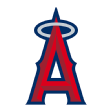Between now and Opening Day, every team in baseball will hire some people, sign some people, trade some people and drop some people. But nearly all of the names have to be figured out. While we're all going to have to wait on the details, we can talk about some general outlines. We can talk about where teams are, and about potential plans. Some teams are positioned to improve; for example, there are plenty of different ways to get better, but getting better is the goal. The same goes for teams poised to get worse; some teams already know they're about to take a step back. What's left is to work out how that's going to look.
So who's going in which direction isn't always surprising or suspenseful. We have a pretty good idea the Philadelphia Phillies are going to try to move forward, and will spend some of their resources. Teams like the Texas Rangers, not so much. We know where the Los Angeles Dodgers are, and we know where the Baltimore Orioles are. We can assume how teams are thinking about their offseasons.
When it comes to the big question to buy or sell, though, there are always a few teams that might catch you off-guard. They're the ones I intend to talk about. I've listed six teams, split into two groups. One group includes three clubs that ought to sell, even though they were at least moderately successful in 2018. And the other group includes three teams that ought to buy, even though you might not think they're positioned to do so.
This isn't about going for it versus tearing it all down to the studs. We don't have to be quite so extreme or dramatic. But this is about thinking shorter term vs. longer term.
Surprising sellers
 Seattle Mariners: Perhaps this would have been more surprising before the Mariners traded Mike Zunino to the Rays. And James Paxton finds himself in the middle of a number of trade rumors, so the Mariners have already somewhat signaled their intent. But remember: This team won 89 games, and for a while seemed destined for a wild-card spot. The Mariners have the longest active playoff drought in North American sports. They came so close -- and now they're positioned to run the market, if they want to.
Seattle Mariners: Perhaps this would have been more surprising before the Mariners traded Mike Zunino to the Rays. And James Paxton finds himself in the middle of a number of trade rumors, so the Mariners have already somewhat signaled their intent. But remember: This team won 89 games, and for a while seemed destined for a wild-card spot. The Mariners have the longest active playoff drought in North American sports. They came so close -- and now they're positioned to run the market, if they want to.
The Mariners are presently a good deal worse than the Astros. They also appear to be worse than the Oakland Athletics. And this club has what might be baseball's worst farm system. The Mariners are in one of the worst spots imaginable, with little in the way of imminent young reinforcements. They could choose to play for .500, sure. But this team could use a full reset.
Paxton could be the best starting pitcher available this winter. The Mariners also have closer Edwin Diaz, who could be the best relief pitcher available. And they have Mitch Haniger, who could be one of the best outfielders available. With so many sellers already having sold, the Mariners can step in and offer elite players such as these to contenders who still want to improve. For the moment, the Mariners don't have a very clear path to the postseason. They might as well step back to start building up a young foundation. Playing for .500 just gets you to ... where the Mariners are right now -- stuck.
 Arizona Diamondbacks: The D-backs are in a position somewhat similar to the Mariners. They're looking up at a clear front-runner in the division. They made the playoffs two years ago, and they gave it a shot again in 2018, but now Patrick Corbin and A.J. Pollock are gone as free agents, so the roster is worse, and the farm doesn't look all that promising. Their present financial flexibility is limited. There's not that much the Diamondbacks can do to get good enough for 2019. So they should turn the other way -- they should get a head start on a reload.
Arizona Diamondbacks: The D-backs are in a position somewhat similar to the Mariners. They're looking up at a clear front-runner in the division. They made the playoffs two years ago, and they gave it a shot again in 2018, but now Patrick Corbin and A.J. Pollock are gone as free agents, so the roster is worse, and the farm doesn't look all that promising. Their present financial flexibility is limited. There's not that much the Diamondbacks can do to get good enough for 2019. So they should turn the other way -- they should get a head start on a reload.
As much as Paul Goldschmidt has been an incredible bargain, he has just one year left on his contract, and you can never take for granted that a player like that would re-sign. By putting Goldschmidt on the block, the Diamondbacks would be adding the best first baseman available to the market. The team also could pay down what's left on Zack Greinke's deal, to offer a top-end starter who so far has been aging gracefully. Robbie Ray and David Peralta are good players, but they're players under team control for only two more years until free agency, and players who should be talked about as Arizona thinks about when its next window to win is likely to open.
It's never fun to throw in the towel before a season even begins, but an honest evaluation of the National League would reveal that the Diamondbacks would face tough odds to make the postseason come spring training. Why tread water, then, if you can start to build up for the next, more promising opportunity down the line?
 Cleveland Indians: There's a clear difference between the Indians and the Mariners or Diamondbacks. The Mariners and the Diamondbacks are more or less stuck. The Indians are good -- real good. Heck, they're division favorites. So I'm not suggesting the Indians blow it up. Rather, I will advocate for a strategic sale.
Cleveland Indians: There's a clear difference between the Indians and the Mariners or Diamondbacks. The Mariners and the Diamondbacks are more or less stuck. The Indians are good -- real good. Heck, they're division favorites. So I'm not suggesting the Indians blow it up. Rather, I will advocate for a strategic sale.
We've already seen some whispers around players such as Corey Kluber and Carlos Carrasco. The Indians seem open to the idea of trading a high-quality starter. I think it would be smart for a handful of reasons. First, there's an enormous gap between the Indians and the next-best team in the dreadful AL Central. Second, the Indians are a smaller-budget operation than teams like the Astros or Phillies. Finally, moving good players brings good players back, and the Indians could turn present value into longer-term value. A good player could be traded for one or two players with a greater number of team-control years remaining.
So the Indians can afford to subtract a little from their present in order to try to extend their competitive window further into the future. If they could trade, say, Kluber for two young, major-league-ready players, that's a lot of team-control years added. The same goes for Carrasco. It might also be worth thinking about moving Edwin Encarnacion. It's rare for a good team to get intentionally worse, but the Indians have this opportunity because of the division they play in. It would hurt for 2019, but it could pay off in 2021 and beyond.
Surprising buyers
 Los Angeles Angels: It might not seem like there's all that much separating the Angels and the Mariners. They're both half-decent teams with a number of good players, but overall they're not on par with the Astros. Yet I think that there are some separating factors. For one thing, the Angels have the much stronger farm system. For another thing, the Angels are dealing with Mike Trout's ticking clock until he becomes a free agent. And for a third thing, if the Mariners go one way, the Angels would be incentivized to go the other. If the Mariners are going to sell, then the Angels should be looking to buy, because the Mariners selling improves the Angels' context.
Los Angeles Angels: It might not seem like there's all that much separating the Angels and the Mariners. They're both half-decent teams with a number of good players, but overall they're not on par with the Astros. Yet I think that there are some separating factors. For one thing, the Angels have the much stronger farm system. For another thing, the Angels are dealing with Mike Trout's ticking clock until he becomes a free agent. And for a third thing, if the Mariners go one way, the Angels would be incentivized to go the other. If the Mariners are going to sell, then the Angels should be looking to buy, because the Mariners selling improves the Angels' context.
Based on very early projections based on the current depth charts, the Angels already look OK, better than the Mariners do. And they look OK despite holes at catcher and first base, and in the bullpen, to say nothing of the starting rotation. When a decent, potentially competitive team looks bad at multiple positions, that actually makes the team easier to upgrade by a win or three. With a few extra wins, the Angels could at least get to the wild-card game.
And, not to make too much of this, but Trout's contract goes for another two years. I don't know if the Angels are going to re-sign him. I don't know if Trout is even willing to re-sign with a team so far away from his home on the East Coast. But Trout would certainly be more willing to re-sign with a team that's actively trying to compete. Trout has been to the playoffs just once, in 2014; it was over in a second. The Angels need to make the case for him to stick around, because Trout is an all-time great player. You don't want to let your all-timers just walk out the door.
 San Diego Padres: The Padres were bad in 2018. They finished with a worse record than everyone in the NL but the Marlins. According to FanGraphs' blend of WAR, the three highest WARs on the club belonged to Craig Stammen, Kirby Yates and Robbie Erlin. So the Padres are a team without a star. And they're a team without an obvious opportunity at the playoffs.
San Diego Padres: The Padres were bad in 2018. They finished with a worse record than everyone in the NL but the Marlins. According to FanGraphs' blend of WAR, the three highest WARs on the club belonged to Craig Stammen, Kirby Yates and Robbie Erlin. So the Padres are a team without a star. And they're a team without an obvious opportunity at the playoffs.
But look at where the Padres are. They have what is probably baseball's top farm system, a system already churning out major league players. The Dodgers are great, sure, but the Giants are in decline, the Diamondbacks will be declining and the Rockies might not be able to get significantly better. With the right moves being made, the Padres could surge forward in a hurry. They could entertain thoughts of second place. They could even entertain thoughts of relevance.
This is probably why the Padres have been linked to names like Noah Syndergaard. The Padres have money to spend, and they have more prospects than they know what to do with. That doesn't mean they should cash all of those prospects in just to try to win now, but it's not hard to see this as an organization about to arrive a year or two ahead of time. The wave of young talent is coming, if it hasn't started to reach the shore already. Add a proven impact player or two, and the Padres could open a whole lot of eyes. This team doesn't have to be defined by the mistake of signing Eric Hosmer. There's a lot more going on.
 Chicago White Sox: You can think of the White Sox as being in the same boat as the Padres. Last year's White Sox were a very bad team, but they already knew they would be some kind of bad, and the farm system is widely regarded as one of the best. Eloy Jimenez will arrive by the last week of April. Right now, the White Sox have a projected opening-day payroll of about $54 million, after having reached $119 million as recently as 2015. So there's plenty of money to throw around.
Chicago White Sox: You can think of the White Sox as being in the same boat as the Padres. Last year's White Sox were a very bad team, but they already knew they would be some kind of bad, and the farm system is widely regarded as one of the best. Eloy Jimenez will arrive by the last week of April. Right now, the White Sox have a projected opening-day payroll of about $54 million, after having reached $119 million as recently as 2015. So there's plenty of money to throw around.
And then, again, there's the division they play in. The Royals and Tigers are not good. The Twins also aren't good, even if they're better than those two clubs. And although the Indians are way out in first, they're also thinking about intentionally getting worse, for the sake of improving the future. The Indians are willing to reduce the gap between themselves and the division's next-best team. That doesn't mean the White Sox could suddenly turn into the AL Central favorite, but they could give the Indians a bit of a fright. They could signal that they're a competitive roster again.
I don't know why the White Sox shouldn't be heavily interested in Bryce Harper and Manny Machado. They're good, they're young and they fill a need. Their options wouldn't end there, but those are the two obvious big fish, since the White Sox organization has the necessary resources. The team is still raw enough that upgrades could fit just about anywhere. And when you have a young core in development, there exists the possibility that you'll see a sudden surge back to relevance. The White Sox want to forget all about 2018. I'm not sure how they could win a World Series in 2019, but they could advance from the tier of the lousy rebuilders. It's time for them to make a move.
